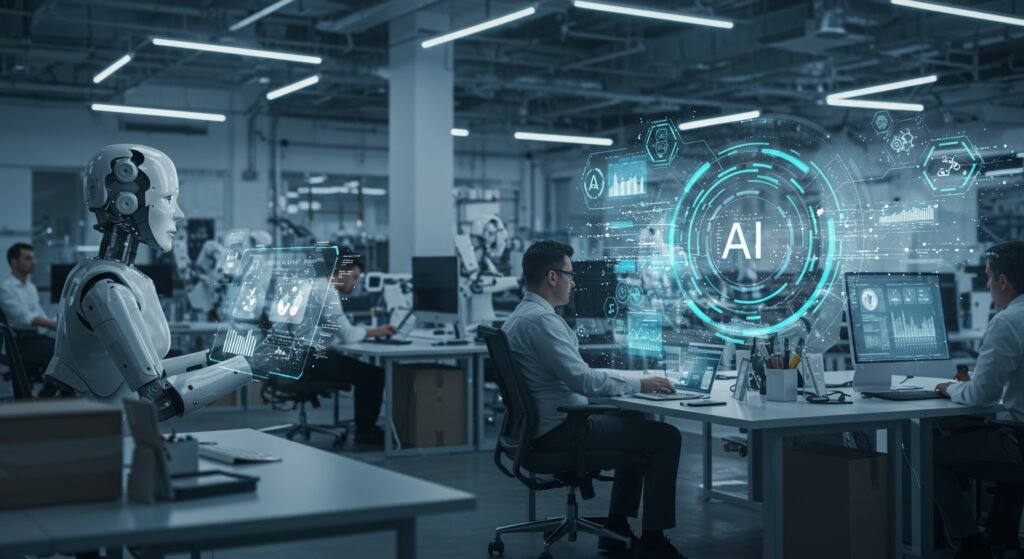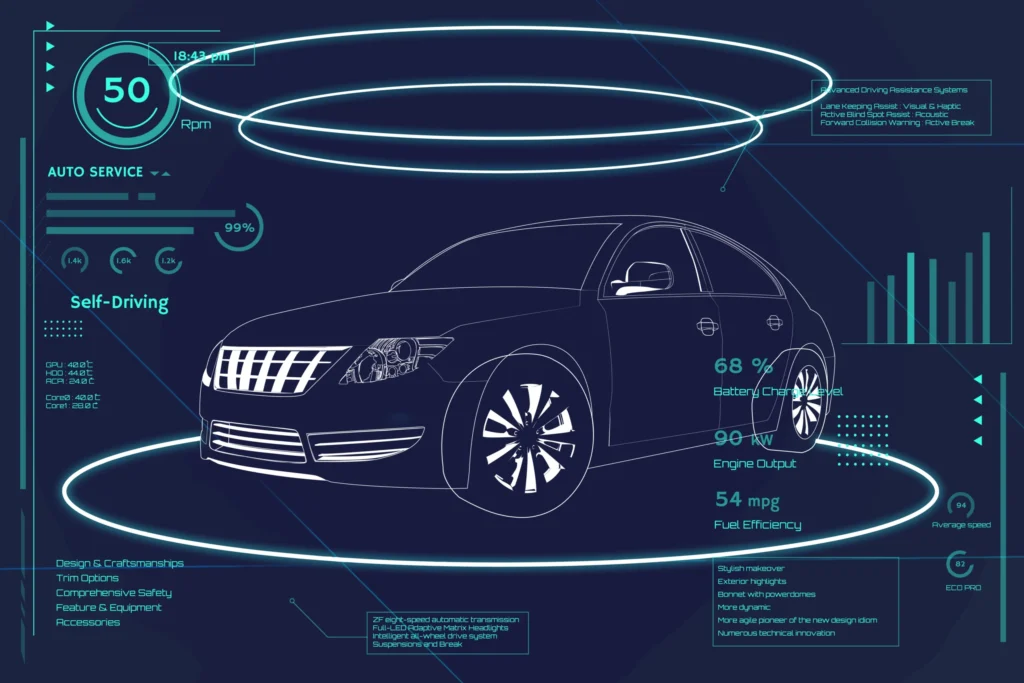Workflow Automation in 2025: 7 Crucial Trends Reshaping Business Operations
The landscape of business operations is undergoing a rapid transformation, driven primarily by advancements in workflow automation. As we approach Workflow Automation in 2025, organizations are increasingly looking to streamline processes, reduce manual errors, and enhance overall efficiency. This isn’t just about simple task automation; it’s about intelligent, adaptive systems that can learn, predict, and optimize complex workflows across various departments. From finance to manufacturing, the integration of cutting-edge technologies like Artificial Intelligence (AI) and Machine Learning (ML) is setting the stage for a new era of operational excellence. Understanding these upcoming shifts is crucial for businesses aiming to stay competitive and agile in a rapidly evolving market.
Table of Contents
- The Evolving Landscape of Workflow Automation in 2025
- Key Technologies Driving Automation Forward
- Impact on Industrial Engineering and Business Operations
- Challenges and Ethical Considerations
- Future Trends: What to Expect Beyond 2025
The Evolving Landscape of Workflow Automation in 2025
By Workflow Automation in 2025, the focus will shift from simple Robotic Process Automation (RPA) to hyperautomation, an approach where organizations rapidly identify and automate as many business and IT processes as possible using a combination of technologies. This includes AI, Machine Learning, event-driven software, RPA, Intelligent Business Process Management Suites (iBPMS), and low-code/no-code platforms. The goal is to create a seamless, interconnected system where data flows effortlessly, and decisions are made with unprecedented speed and accuracy. The adoption of cloud-native automation solutions will also accelerate, providing scalability and flexibility previously unattainable. Companies will move towards holistic automation strategies, breaking down departmental silos to achieve enterprise-wide optimization.
Key Technologies Driving Automation Forward
Several technological advancements are converging to push the boundaries of workflow automation:
Artificial Intelligence (AI) and Machine Learning (ML)
AI and ML are at the heart of next-generation automation. They enable systems to perform complex cognitive tasks, such as natural language processing, image recognition, and predictive analytics. This means automated workflows can now handle unstructured data, make informed decisions, and even adapt to changing circumstances without constant human intervention. For instance, AI-powered systems can analyze customer feedback to automatically route support tickets or predict equipment failures in manufacturing.
Robotic Process Automation (RPA) Evolution
While RPA has been foundational, its evolution involves deeper integration with AI, leading to ‘Intelligent RPA’. This allows bots to go beyond repetitive, rule-based tasks to manage more complex, exception-handling processes. The bots become more resilient and capable of learning from past interactions, significantly enhancing their utility in dynamic business environments.
Low-Code/No-Code Platforms
These platforms democratize automation, allowing business users with minimal coding knowledge to design and implement workflows. This agility is crucial for rapid deployment and iteration, ensuring that automation initiatives can keep pace with business demands. It empowers departmental teams to solve their own operational bottlenecks without relying heavily on IT.
Internet of Things (IoT) Integration
IoT devices generate vast amounts of real-time data. Integrating this data into workflow automation systems enables proactive responses and smarter decision-making. For example, sensor data from a smart factory can trigger automated adjustments to production lines or maintenance schedules, optimizing resource utilization and minimizing downtime.
Impact on Industrial Engineering and Business Operations
The implications of advanced workflow automation for industrial engineering and broader business operations are profound. Efficiency gains are no longer marginal; they are exponential. Tasks that once took hours or days can be completed in minutes, freeing up human capital for more strategic, creative, and value-added activities. This shift is redefining job roles, moving employees from repetitive tasks to oversight, analysis, and innovation.
For example, in supply chain management, automated workflows can optimize inventory levels, predict demand fluctuations, and manage logistics with greater precision. This leads to reduced operational costs and improved customer satisfaction. The synergy between industrial engineering principles and automation technologies is creating a new paradigm of operational excellence. To explore more about the foundational principles, you can refer to our guide on optimizing business processes.
Here’s a comparison of current automation capabilities versus what’s expected by 2025:
| Feature | Current Automation (2023) | Expected Automation (2025) |
|---|---|---|
| Decision Making | Rule-based, limited intelligence | AI-powered, adaptive, predictive |
| Integration | Point-to-point, often manual | Hyper-connected, API-driven ecosystems |
| Scalability | Requires significant IT effort | Cloud-native, easily scalable |
| Data Handling | Structured data focus | Both structured and unstructured data |
| Human Interaction | Supervisory, exception handling | Collaborative, human-in-the-loop AI |
Challenges and Ethical Considerations
While the benefits are clear, the path to widespread workflow automation isn’t without hurdles. Data privacy and security remain paramount concerns, especially as more sensitive information is processed by automated systems. The ethical implications of AI, such as bias in algorithms and the potential for job displacement, also require careful consideration and proactive policy-making. Businesses must invest in robust cybersecurity measures and commit to ethical AI development principles to build trust and ensure responsible deployment.
Furthermore, resistance to change within organizations can hinder adoption. Effective change management strategies, including comprehensive training and communication, are vital to ensure employees embrace rather than fear automation. Organizations should view automation not as a replacement for human talent, but as an augmentation tool that empowers employees to achieve more.
Future Trends: What to Expect Beyond 2025
Looking beyond Workflow Automation in 2025, we can anticipate further advancements. Predictive automation, where systems anticipate needs and act proactively, will become more common. The concept of digital twins – virtual replicas of physical assets, processes, or systems – will be increasingly integrated into automation workflows for real-time monitoring and simulation. Furthermore, the convergence of automation with augmented reality (AR) and virtual reality (VR) could create immersive environments for process design and optimization.
The drive towards sustainable and green automation will also gain traction, focusing on optimizing resource consumption and reducing environmental impact through intelligent process design. Businesses will leverage automation to not only improve their bottom line but also contribute positively to global sustainability efforts.
For more insights into global automation trends, visit Forbes Innovation section.
Conclusion
Workflow Automation in 2025 represents a pivotal moment in the evolution of business. It’s an era defined by intelligent, interconnected, and highly adaptive systems that promise unprecedented levels of efficiency, accuracy, and strategic insight. While challenges exist, the opportunities for growth and innovation are immense. Organizations that proactively embrace these trends, invest in the right technologies, and focus on ethical implementation will be well-positioned to thrive in the automated future, transforming their operations from reactive to predictive and truly intelligent.


